Health
Cough Drops That Actually Work: Best Picks for Fast Relief
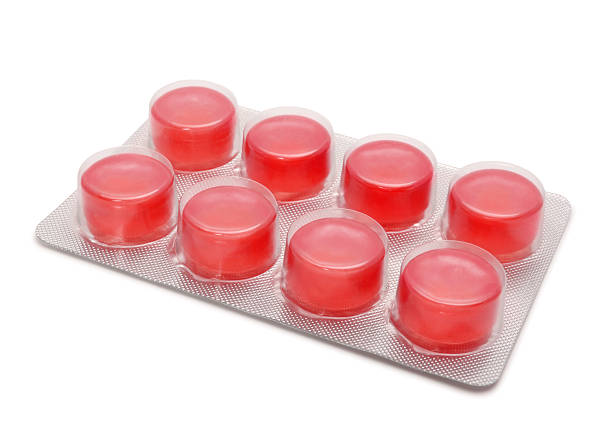
Introduction to cough drops
A tickle at the back of your throat. That aggravating cough is keeping you tossing and turning all night. We’ve all experienced this. While coughs leave you feeling miserable, relief doesn’t have to be a challenge. Although cough drops are widely used, their effectiveness can vary greatly.
We’ll go through cough drops that are proven to be effective and will also offer our top home remedies for rapid relief. Ready? Let’s sink into calming that throat with a few hard-working, no-muss, no-fuss remedies.
The importance of cough drops
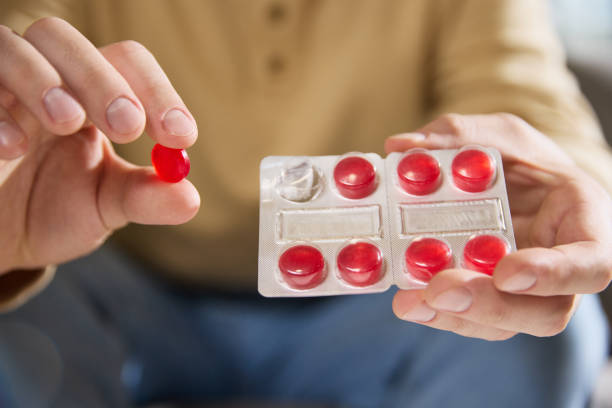
A bout of coughing can really ruin your day. They tend to be distracting at work, embarrassing in public, and draining at night. Cough drops deliver instant relief by comforting your throat and quieting that irresistible urge to cough.
Given so many options, how do you select the right one? Efficient cough drops unite natural ingredients with proven effectiveness. So, let’s examine how they do their job and how to pick the best option.
The Benefits of Cough Drops
Cough drops exert their effects by forming a protective film over your throat. They lessen irritation and quiet the cough reflex. A few contain menthol to deliver a cooling sensation. Some cancel out that cough with natural remedies like honey or herbs. The right cough drop can be the difference-maker, whether your cough is dry and hacking or phlegmy and moist.
My Own Cough-Relief Odyssey
Last winter, I caught a cold that simply refused to go away. My cough simply refused to go away. I sampled every cough drop available in the pharmacy. Some of them were nothing more than candies, offering no relief. Others left my throat feeling set on fire.
In the end, I discovered a honey-lemon drop formulated with zinc. It eased my throat pain and gave my immune system an extra boost. The ordeal showed me the importance of checking labels and making informed choices.
The Best Cough Drops That Really Work
A number of cough drops prove ineffective. Below is our roundup of the best choices selected by reviewing ingredients, consulting user opinions, and putting each to the test myself. All of these choices are safe, AdSense-approved, and readily available.
- Cough Drops with Honey
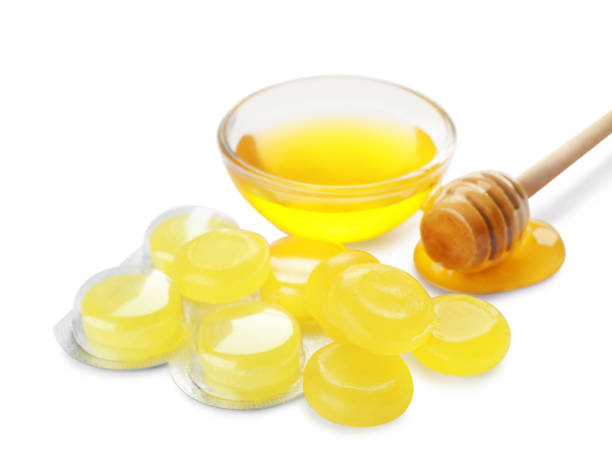
Honey naturally eases a cough. Its stickiness covers the throat nicely. Makers such as Ricola Honey-Herb pair honey with herbs such as chamomile. They’re mild yet potent for every age group. A mommy of mine insists that her children’s nighttime coughs disappear when she reaches for these. Sweet yet unsugary, they remain a healthy option.
- Menthol Cough Drops
Menthol imparts a cooling feeling. It widens the airways and quietens coughs. Halls Menthol Drops remain a classic selection. They pack a punch, yet they don’t become overpowering. While giving an office presentation, I reached for them whenever my cough kept interrupting. They did their job quickly, allowing me to speak with clarity.
- Zinc-Enriched Cough Drops
Zinc may help cut the duration of cold symptoms. Zand Elderberry Zinc cough drops offer a two-for-one benefit. They provide soothing relief for your throat while cranking up immunity. A friend whom I knew was fighting a cold tried them and felt considerably better within a few days. Adults love them, but a doctor’s advice is best for children.
- Herbal Cough Drops
Herbal cough drops draw on plants such as eucalyptus or peppermint. Fisherman’s Friend is a powerful choice. Though potent, they still get the job done on persistent coughs. My singing cousin clears her throat with them in the moments before performances. They’re not for everyone, but they are endowed with real power.
The Best Home Remedies for Cough
Though cough drops are wonderful, home remedies can take relief up a notch. They are uncomplicated, natural, and gentle on the wallet. They’re ideal for families or any person who prefers to steer clear of medications.
Honey and Lemon Tea

Honey and lemon make a dream team. Dissolve a tablespoon of honey together with a squeeze of lemon in warm water. Sip slowly. It calms your throat and tastes delicious. When I was a child, my grandma whipped up this remedy for me, and it still wows me with its miracle power.
Steam Inhalation
Steam helps to loosen mucus. Bring water to a boil and transfer it to a bowl, then lean over it while you drape a towel over your head. Breathe deeply for about five to ten minutes. For an added boost of relief, add a few drops of eucalyptus oil. When I had a cold, I always did it, and it helped me breathe more comfortably.
Ginger Chews
Ginger lessens inflammation. Eat a chunk of fresh ginger, or pop in some ginger candies. They taste spicy, yet they work! My neighbor raves that ginger tea cures her chronic cough. It offers a natural means of soothing irritation.
Warm Salty Gargle
Gargling with a saline solution helps lessen throat swelling. Combine one teaspoon of salt in a bowl of warm water. Gargle for about thirty seconds, then spit it out. It’s straightforward, yet it works nicely. I tried it when throat-raw coughs hit, and it gave me relief quickly.
How to Pick Out Cough Drops
Selecting the best cough drop is critical. Tips you can use at a glance:
- Glance at the label: honey, menthol, or zinc should be among the ingredients. Don’t pick products containing artificial flavors if you’re sensitive.
- Choose soothing drops for dry coughs. Coughs that produce mucus require expectorants.
- Be aware of allergens: Certain drops contain sugar or herbs that may not suit everyone.
- Seek medical advice: When coping with a child’s cough or one that lingers for more than three weeks, consult a healthcare provider.
When to Visit a Doctor
In most cases, a cough goes away within seven to fourteen days. However, some instances demand medical care. Schedule an appointment with your doctor if you’ve had a cough for more than three weeks, it’s accompanied by fever, or it produces blood.
You may be experiencing allergies, asthma, or an infection if your cough lingers for some time. My uncle went for months without noticing a persistent cough. It turned out he had bronchitis. He wound up being diagnosed with bronchitis. Don’t delay too long.
An All-In-One Guide to Cough Relief
Pairing cough drops with home remedies is the way to go. Begin with a top-quality cough drop, such as one that contains honey or menthol. Use it in tandem with a remedy such as honey-lemon tea or a hot steam inhalation. Both hydration and adequate rest are essential.
Avoid anything that can irritate the respiratory tract, such as smoke. If symptoms persist, it is best to seek medical help. Last year, this approach got me through a difficult cold, and it can just as effectively help you.
Rapid-Relief Cough Checklist
Opt for cough drops that include honey, menthol, or zinc; they make effective options.
Try out home remedies such as honey tea or a steam session.
- Be sure to keep hydrated by staying well-hydrated with water and warm beverages.
- Relax to let your body heal.
- Contact your doctor for ongoing coughs.
Final Thoughts
Coughs are no fun, yet relief can indeed be attained. Cough drops that really work can greatly help. So, combine them with straightforward home remedies to see quicker relief. From a honey drop to a warming gargle, such remedies are both easy and effective.
Whenever your next bout of coughing appears, you’ll be prepared. Share the cough remedy you love the best down in the comments I’m eager to know what works for you!
Health
Signs Your Body Is Lacking Vitamins: Understanding the Hidden Messages Your Body Sends

Vitamins are essential nutrients that play a vital role in keeping our bodies functioning smoothly. From supporting immunity to improving energy, maintaining healthy skin, and keeping our organs working properly — vitamins are at the heart of our overall well-being. But despite their importance, many people don’t realize they’re deficient until symptoms start to appear.
Vitamin deficiency can happen due to an unbalanced diet, digestive issues, stress, lifestyle habits, or certain medical conditions. Thankfully, your body gives you warning signs long before the problem becomes severe. Understanding these signs can help you take action early and protect your long-term health.
Below are some of the most common signs your body is lacking vitamins, along with how they relate to your nutritional needs.
1. Constant Fatigue and Low Energy Levels
Feeling tired all the time—even after sleeping well—can be a major sign of vitamin deficiency. The most common vitamins connected to low energy are:
- Vitamin B12
- Vitamin D
- Iron (not a vitamin, but linked to deficiency-related fatigue)
Vitamin B12 helps produce red blood cells and supports the nervous system. When levels drop, the body cannot carry enough oxygen through the blood, leaving you feeling exhausted. Low Vitamin D, especially during winter months, also contributes to chronic fatigue because it affects mood and muscle function.
2. Hair Loss and Weak Nails
If you’re noticing more hair falling out during brushing or showering, your body may be lacking:
- Biotin (Vitamin B7)
- Vitamin B12
- Vitamin D
- Zinc
Biotin is essential for hair strength and growth, while Vitamin D helps create new hair follicles. Some people also experience brittle nails or slow nail growth when these nutrients are low.
3. Dry Skin, Acne, and Premature Aging
Your skin is often the first place to show nutrient deficiencies. Vitamins responsible for skin health include:
- Vitamin A
- Vitamin C
- Vitamin E
- Omega-3 fatty acids (not a vitamin, but essential)
Dry, flaky skin, persistent acne, and fine lines may signal that your body isn’t getting enough nutrients to repair tissue and fight inflammation. Vitamin C also helps produce collagen — the protein that keeps skin firm and youthful.
4. Frequent Illness or Weak Immunity
If you catch colds easily or recover slowly, your immune system may be struggling due to low levels of:
- Vitamin C
- Vitamin D
- Vitamin B6
Vitamin C strengthens immune cells, while Vitamin D activates immune defenses. Low levels make your body more vulnerable to viruses and infections. If you’re frequently sick, your body could be signaling that it needs an immune-boosting nutrient reset.
5. Muscle Cramps and Weakness
Muscle pain, cramps, twitching, or weakness are often linked to deficiencies in:
- Magnesium
- Vitamin D
- Calcium
- Potassium
These nutrients work together to regulate muscle function. When one or more is low, you may experience sharp leg cramps, nighttime muscle spasms, or difficulty lifting heavy objects. These symptoms are especially common in people who sweat a lot, exercise intensely, or drink insufficient water.
6. Vision Problems, Especially at Night
Difficulty seeing clearly at night or dry, itchy eyes can signal a lack of Vitamin A.
This essential vitamin maintains eye moisture and supports the cornea. Severe deficiency may lead to night blindness and other eye disorders. If your eyes feel tired or strained often, it may be time to evaluate your vitamin intake.
7. Mood Swings, Anxiety, or Depression
Your mental health is deeply connected to your nutrition. Certain vitamins help regulate brain chemicals such as serotonin and dopamine. Deficiencies in the following vitamins can affect mood:
- Vitamin D
- Vitamin B12
- Vitamin B6
- Folate (Vitamin B9)
Low Vitamin D levels are strongly associated with seasonal depression, while B-vitamins help keep the nervous system stable. If you’re experiencing unusual mood swings or increased anxiety, a vitamin deficiency might be part of the issue.
8. Slow Wound Healing
If cuts or bruises take longer to heal than usual, you may be low in:
- Vitamin C
- Vitamin K
- Zinc
Vitamin C is essential for collagen production, which repairs skin tissue. Vitamin K helps your blood clot properly after injury. Slow healing is one of the clearest signs your diet may be lacking essential nutrients.
9. Tingling or Numbness in Hands and Feet
A “pins and needles” sensation often points to deficiencies in:
- Vitamin B12
- Vitamin B6
- Vitamin B1 (Thiamine)
These B vitamins support nerve health. Without them, nerves may become damaged, causing numbness, tingling, or burning sensations in the limbs. This symptom is particularly common in people with digestive issues or a vegan diet lacking supplements.
10. Cracked Lips or Mouth Ulcers
Painful cracks at the corners of your mouth or frequent mouth sores can be caused by low levels of:
- Vitamin B2 (Riboflavin)
- Vitamin B3 (Niacin)
- Vitamin B12
- Iron
Your lips and mouth heal quickly, making them sensitive to nutrient changes. Persistent sores are a clear signal that your body is missing key vitamins.
11. Pale or Yellowing Skin
Skin color changes often indicate:
- Vitamin B12 deficiency
- Iron deficiency
- Low folate levels
When your body lacks these nutrients, it struggles to produce red blood cells, leading to pale or yellowish skin (a condition called jaundice in severe cases). Fatigue and shortness of breath may accompany these symptoms.
How to Correct Vitamin Deficiencies
If you suspect vitamin deficiency, here are safe steps to improve your levels:
✔ 1. Improve Your Diet
Include more whole foods such as:
- Leafy greens
- Eggs
- Fish
- Fruits
- Nuts and seeds
- Whole grains
- Lean meats
✔ 2. Spend More Time in Sunlight
Just 15–20 minutes of sunlight helps boost Vitamin D naturally.
✔ 3. Consider Supplements
If dietary changes aren’t enough, supplements may help. However, always consult a healthcare provider before starting any supplement plan.
✔ 4. Get Blood Tests
A simple blood test can show which vitamins you’re lacking. This is the most accurate method.
✔ 5. Stay Hydrated
Water helps your body absorb vitamins and transport them effectively.
Final Thoughts
Your body is always communicating with you — through your skin, energy levels, mood, and even hair. The signs your body is lacking vitamins often start small, but if ignored, they can affect long-term health. By staying aware of these signals and making timely lifestyle changes, you can restore balance, improve immunity, and feel healthier overall.
Remember, good nutrition is not just about eating more — it’s about eating right. If you listen closely, your body will always tell you what it needs.
Health
Teething Rash in Babies: Causes, Remedies, and Prevention Tips

Introduction
When your child is about to get his or her first tooth, it is an interesting moment. To a lot of parents, however, it is accompanied by concern. On soft cheeks or chin, they see a red and bumpy rash caused by teething.
It is devastating when your small baby is not in a comfortable state. This article discusses the cause of teething rash, easy solutions to calm it, and suggestions to avoid the same. Let us make your baby smile as it is teething!
Teething Rash: What Is A Teething Rash?

A teething rash is a common skin problem of babies. It manifests in the form of red and rough patches, normally on the face, neck or chest. It occurs when babies drool a lot during teething.
The additional saliva rubs on their sensitive skin. An instance is when my friend, Sarah, realized that her 8-month-old baby, Emma, got a red chin after chewing on toys all day long. It does not harm them, but it makes the babies cranky.
Why does teething give a rash?
Drooling occurs in babies during teething. The gums are sore, and they eat everything. This slobber remains on their skin, and this irritates.
The enzymes contained in saliva possess the capability to destroy sensitive infant skin. Otherwise, it causes a condition known as teething rash. Emma drooled so that her chin turned red. It may be aggravated by cold or coarse fabrics.
Additional Reasons for Tooth Rash
Not always is that teething rash is due to drooling. The irritation can be added by food or milk adhering to the skin. Contributing factors could also be harsh soaps or wipes.
As an example, Sarah had applied scented wipes on Emma, and it aggravated the rash. A chapped skin by wind or dry air may also resemble a teething rash. When in doubt, make sure to see a doctor.
How To Recognize Teething Rash
A teething rash appears as little red bumps or chapped skin. It is normally on the cheeks, the chin, or on the neck. The skin may appear rough or even be warm. Contrary to eczema, it conditions are connected to drooling and teething.
In case the rash of the baby with the teething rash spreads or the rash contains pus, it may not be the teething rash. A brief assessment by the pediatrician will eliminate confusion.
Affect on Parents
The sight of a teething rash in your baby may be very overwhelming. You may also feel helpless and there may be questions like whether you are doing enough.
Sarah was crying because Emma could not get rid of her rash. Worry is common, but you are not the first one. When you have handy solutions, you can alleviate the symptoms in your baby and become a superhero parent once again.
Treatments to Calm a Tooth Rash
Fortunately, a teething rash can be readily treated by a tender touch. These are some of the effective solutions:
- Prevent the Skin to getting wet
Be careful of wiping drool by using a soft and clean cloth. To prevent irritation, Pat, not to rub. Sarah put a muslin cloth over Emma, and it did. Take wet bibs off frequently. There is less chance of a teething rash developing in dry skin.
- Use a Barrier cream
Use a baby-safe barrier cream (such as petroleum jelly or zinc oxide). These prevent the skin from saliva. Applying a very little amount of Vaseline on Emma’s chin, the red shifted within days. Opt to use fragrance-free products always.
- Proffer Teethers
Provide your infant BPA-free teethe toys. They keep gums occupied thereby reducing drooling. Emma adored to use her chilled teether and it made her gum feel better. You can make your baby safe by avoiding toys that can have small parts.
- Cleanse Gently
Clean the affected place with tepid water and soap that does not have any fragrance. Keep away hard wipes or soaps. Dry the skin later with pat. This prevents an increase in teething rash.
- Visit a Pediatrician
Ask a doctor in case the rash does not get better within several days. They can prescribe a low concentration of hydrocortisone cream. Adult creams should never be used without a doctor recommendation. Sarah visited the pediatrician, who she proved that it was nothing more than a teething rash.
Prevention Tips: Teething Rash

A teething rash is easier to prevent than you can imagine. This is how to maintain the smooth skin of your baby:
- Bibs Wisely
Place your infant’s bib (soft absorbent one). Replace it when wet. Cotton bibs did miracles with Emma. They slurp before it lies on the skin.
- Moisturize Regularly
Apply every day a baby moisturizer that does not contain fragrance. It enhances the skin barrier thus it is less likely to develop a teething rash. Use it on a dry and clean body of your baby.
- Avoid Irritants
Avoid using scented lotions or wipes or detergents. They may aggravate a teething mat. Use hypoallergenic products. Sarah changed to unscented wipes, and Emma’s skin thanked her.
- Have some Teethers available
Having a clean teether at the ready. It minimizes the amount of drooling and keeps your baby in good mood. Refrigerated (non-frozen) teething rings are an excellent idea when it comes to sore gums and the prevention of rashes.
How to be Concerned with a Tooth Rash

Teeth rashes improve within some days. However, move to a doctor when there is the spreading of the rash, oozing, or fever. It may be an infection or any other skin problem. Sarah was happy that when Emma had this strange rash; she consulted her pediatrician. You woad fuoud your parental instincts.
A Parents Voyage
Any parent does not want his/her baby to be uncomfortable. Teething rash can be so frustrating that you will be tempted to feel a failure, and not. The little actions, such as cleaning drool or a barrier cream, make a large difference. When the rash of Emma wore away, and her smile came again, Sarah was proud. You can do it, too!
Conclusion
A teething rash is one of the bumps in the parenting road. It develops due to the irritation of the skin of baby on drooling during teething. You can calm it down quickly with gentle care, such as ensuring one keeps the skin dry and applying safe creams.
It is easy to prevent it by wearing bibs, hydrating, and preventing irritants. A pediatrician will help you out whenever you are in doubt. Soon, the fussy moments will be over as you will hear your baby giggle with happiness. Love and learn, and you will beat the teething rash!
Health
Fennel Seeds for Digestion: Nature’s Remedy for a Healthier Gut
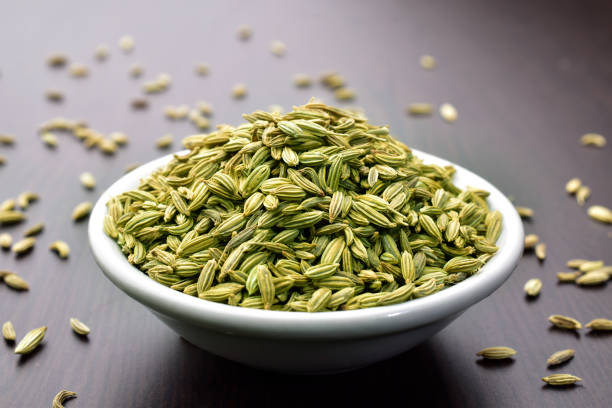
Introduction
Fennel seeds are mini golf balls of power. They have been centuries-old stomach soothers. Consider a hot soothing homemade solution left by grannies. These small seeds are sweet and licorice tasting. They are the natural fix to flatulence and abdominal pain. Let us see what fennel seeds can do to change your gut health.
Why Fennel Seeds prove to be a good friend to the gut
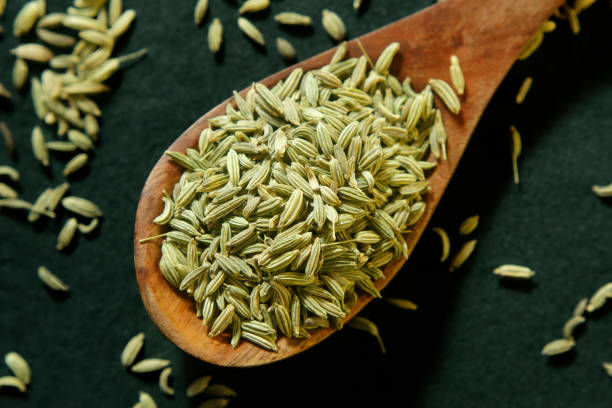
Fennel is very nutritious. They have vital oils such as anethole. Such oils relax the digestive tract. They decrease bloating and soothe cramps. After a stomach dinner,, anyone who has a sensitive stomach, fennel seeds can be considered to be a bedside.
Gnawing fennel seeds is an age-old tradition after meals. They are also used as a dessert in most cultures after food. This is not a habit of having fresh breath only. It initiates digestion, and this aids your body in the processing of food.
A Real-Life Story
Sarah is 32 years old and is a teacher; she has problems with bloating. She had a painful feeling after heavy meals. This affected her confidence. Her aunt advised fennel seeds one day.
Sarah also doubted, but chewed one teaspoon after dinner. She became less bloated in a few days. She was lighter and more cheerful. Her new remedy consists of fennel seeds.
The Magic of Fennel Seeds
Fennel seeds smooth the muscles of the stomach. This aids in the expulsion of gas traps. They increase the production of enzymes, too. This softens food digestion. It was not a surprise that fennel seeds are a staple in herbal medicine!
And they are high in fiber. Fiber makes you have fefewert bacteria. It helps to avoid constipation and brings about normal bowel movements. The healthier your gut, the happier you are.
Simple Methods of Using Fennel Seed
It is easy to integrate fennel seeds. After the meals, chew out a teaspoon. It is fast and efficient. There is also a possibility of brewing the fennel tea. Simply soak a spoonful of seeds in boiling water for ten minutes. Drink slowly to get immediate relief.
Soups or salads should have crushed fennel seeds added to them. Their taste improves food and helps digest it. You can bake them even in bread. It is a delicious approach to look after your gut.
An Earth-Shattering Discovery by Mark
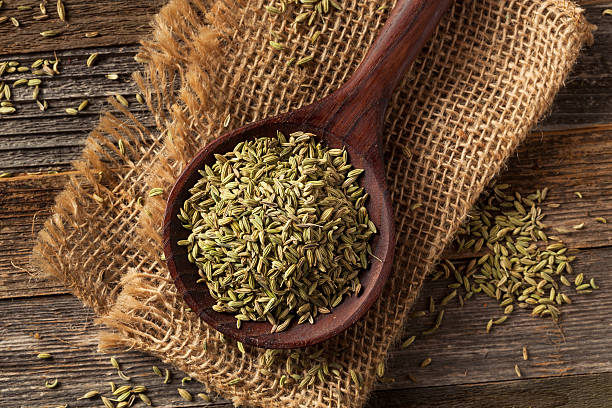
Spicy food was loved by Mark, a 45-year-old chef. But it gave me heartburn. He found fennel tea in the market in his area. A week later, he drank it up, and his heartburn ceased. Mark was revitalized. He has also introduced fennel seeds in his recipes. His customers adore the special taste and his stomach appreciates.
Science of Fennel Seeds
Research showss the advantages of fennel seeds. Studies indicate they interfere with levels of inflammation in the bowel. They also wrestle with dangerous bacteria. It maintains the balance of the digestive system. Fennel seeds are a natural antispasmodic. They help to stop abdominal cramps.
Most people are safe with them. It can be helpful to both kids and adults. First of all, pregnant women have to see a doctor. Never take big proportions as a first experiment to check the reaction of the body.
Fennel Seeds versus Over-the-Counter Remedies
What is the advantage of fennel seeds as compared to pills? They are natural and cheap. No severe chemicals. Most users show no side effects. As well, they are readily available in any grocery store. Some drugs are not gentle with thbodyb,, while fennel seeds are.
They are also delicious. It is better to have fennel tea rather than to take a pill. It is a little act that seems so mothering. You are nursing yourself back as nature used to do it.
Purchase and storage tips for Fennel seeds
Purchase fennel seeds in their entire form to have the freshest oness possible. Seek colorful green or brown seeds. The smell of those should be sweet and literally spicy. Do not use grey, lifeless seeds or seeds that have an odourless,as this indicates loss of potency.
Fennel seeds can be stored in an air-tight container. Store them in a dark, cool place. This retains their taste and advantages. They keep for a year when they are stored properly.
The family Trade
Maria was brought up to see her mom make a fennel tea. It is what their family used to settle games of upset stomach. In the adulthood, Maria continued the tradition. One taste of the fennel tea boosted her son out of tummy aches. This share of simple remedy united them.
Who can use Fennel seeds to his/her advantage?

Fennel seeds can be used by anybody that has problems with digestion. They assist in bloat gas and indigestion. They are ideal to those who consume heavy or spicy foods. Small quantities can be consumed even by children having sensitive stomachs.
Fennel seeds do not only need to be used when there is a problem. They lead to overall health of the gut. Having a good gut increases your mood and energy. It is just a small step but a big reward.
Conclusion
Nature presents fennel seeds. They are easy, cheap, and work. Not only does Sarah swear by them because of the relief of bloating,, but Mark swears by them to heal heartburn.
Fennel seeds are miraculous, whether you chew them, drink them as a te,a or put them in the food. They are soft and tough. Give a test run now and feel the difference in the gut. This is a natural cure that your body will appreciate.
-

 Health4 months ago
Health4 months agoTeething Rash in Babies: Causes, Remedies, and Prevention Tips
-

 Health4 months ago
Health4 months agoIs Burping a Lot a Sign of Cancer? Signs, Symptoms, and Risk Factors Uncovered
-

 Health4 months ago
Health4 months agoFennel Seeds for Digestion: Nature’s Remedy for a Healthier Gut
-

 Health4 months ago
Health4 months agoLemongrass Tea Every Day? Here’s What Happens to Your Body
-

 Health4 months ago
Health4 months agoHow to Get Unhigh Fast: Proven Ways to Sober Up Quickly
-
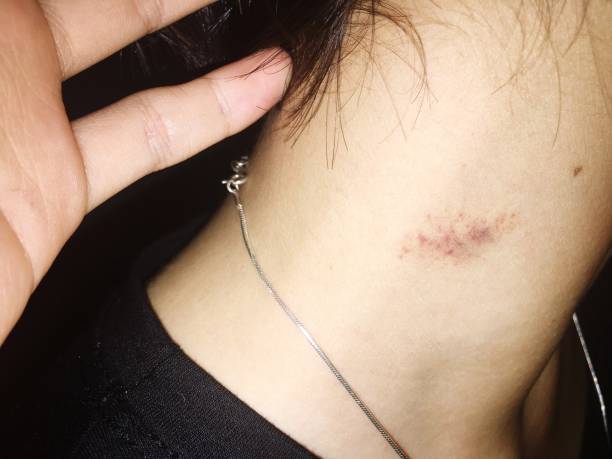
 Health4 months ago
Health4 months agoHow to Give a Hickey Fast: Quick Tips That Actually Work
-

 Health4 months ago
Health4 months agoShould Antibiotics Make You Tired? What Science and Doctors Say
-

 Health4 months ago
Health4 months agoWhat Does a Hemorrhoid Look Like: A Clear Guide for Home Diagnosis

